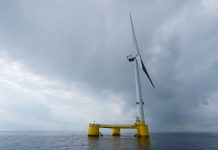Northumbria’s monks, beware; charged up Norsemen will tomorrow (Wed 23rd) tentatively unleash their hoard of clean volts on your Geordie shore.
Long contracts, not longships, stand soon to be welcomed later this year, after the newly completed 450-mile cable – reputedly the world’s longest subsea power link – is sparked into life for testing tomorrow.
Passing up to 700MW in either direction, the prosaically named North Sea Link connects Blyth, north of Newcastle, with Norway’s coastal community of Kvilldal, in Rogaland.
Co-financed by the European Union’s Connecting Europe Facility, the €1.5 Billion project has been developed by National Grid-ESO and Statnett SF, Norway’s state-owned transmission service operator. Building took four years.
Cables fabricated in Naples were laid by Prysmian’s cable-laying vessel ‘Giulio Verne’. French contractor Nexans has completed installations on the Norwegian side.
The world-beating, unimaginatively monikered North Sea Link has been designed to bring the fjords’ hydropower, hitherto relatively cheap, to Britain. Wind generation off Scotland & Northumbria will make the reverse journey. Net flows westwards could account for as much as 4% of UK national consumption.
If tests succeed, full commercial operation will start on October 1.
‘No way like Norway’, says Erik the Elektrikal Engineer
The two parties will allocate capacity via an implicit auction mechanism within the day ahead timeframe, coupling Day Ahead markets of both GB and of the NO2 Bidding Zone in Norway.
The auction process will be run using an algorithm to be developed and maintained by the cable’s designated power exchange. The auction’s design principle will be to match power orders between market participants utilising the pipe’s capacity.
Initial net flows are expected to predominate towards Britain. Record power prices last winter resulted from prolonged cold weather, sinking National Grid’s supply buffer to low levels. The temporary failure of BritNed interconnector with the Netherlands and a delayed start on construction of a new Anglo-French cable kept prices high.
Flows are expected to even up as Britain builds out toward a declared target of 40GW of offshore wind by 2030.



